INDIAN ARMED FORCES CHIEFS ON OUR RELENTLESS AND FOCUSED PUBLISHING EFFORTS

The insightful articles, inspiring narrations and analytical perspectives presented by the Editorial Team, establish an alluring connect with the reader. My compliments and best wishes to SP Guide Publications.

"Over the past 60 years, the growth of SP Guide Publications has mirrored the rising stature of Indian Navy. Its well-researched and informative magazines on Defence and Aerospace sector have served to shape an educated opinion of our military personnel, policy makers and the public alike. I wish SP's Publication team continued success, fair winds and following seas in all future endeavour!"

Since, its inception in 1964, SP Guide Publications has consistently demonstrated commitment to high-quality journalism in the aerospace and defence sectors, earning a well-deserved reputation as Asia's largest media house in this domain. I wish SP Guide Publications continued success in its pursuit of excellence.
- Operation Sindoor: Resolute yet Restrained
- India’s Operation Sindoor Sends a Clear Message to Terror and the World – ‘ZERO TOLERANCE’
- Japan and India set forth a defence cooperation consultancy framework, talks on tank and jet engines
- Terrorist Attack in Pahalgam in Kashmir: Unfolding a long surgical war against PAK
- Lt General Pratik Sharma takes over Command of Indian Army's Northern Command
Space Diplomacy
Collaboration with NASA will propel India's space odyssey into a thrilling future and possibly put an Indian Astronaut on the International Space Station
 |
The Author is Former Director General of Information Systems and A Special Forces Veteran, Indian Army |
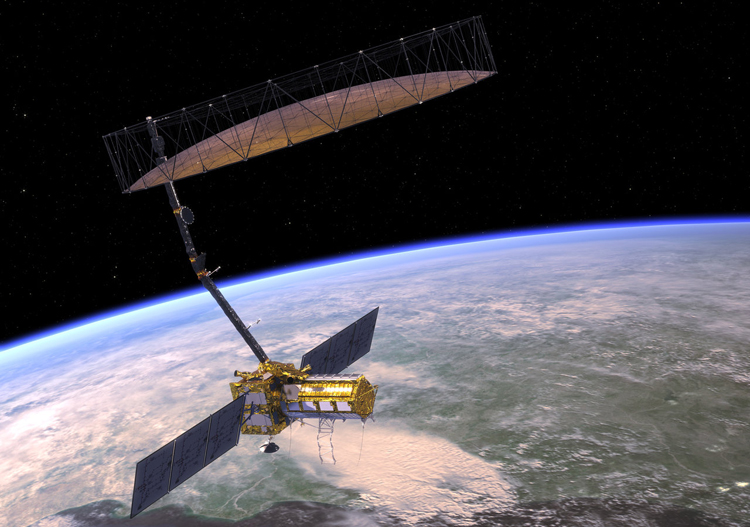
Bill Nelson, Administrator of America’s National Aeronautics and Space Administration (NASA) announced on his recent trip to India that the US will help train and send an Indian Astronaut to the International Space Station (ISS) by the end of 2024. “The selection of the astronaut will be done by the Indian Space Research Organisation (ISRO). NASA won’t be a part of it. Details of the mission are being worked out by ISRO,” he said. This would be 40 years after India’s Rakesh Sharma traveled to space in 1984. Nelson also said NASA will help India in setting up its own space station in 2035.
Bill Nelson, Administrator of NASA, announced US assistance in training and sending an Indian astronaut to the ISS by the end of 2024
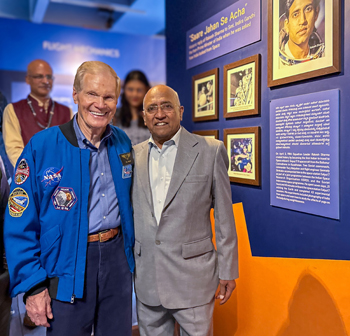
During Nelson’s meeting with Prime Minister Narendra Modi, calls for ISRO to establish an Indian Space Station by 2035 and sending an Indian astronaut to the Moon by 2040 were reiterated. Nelson intimated de-orbiting NASA’s space station in 2031 that would have been replaced with commercial space stations by then. He also highlighted that the NISAR satellite programme, scheduled for launch in the first quarter of 2024, is another significant outcome of Indo-US collaboration.
The two nations reiterate calls for ISRO to have an Indian Space Station by 2035 and send an Indian astronaut to the Moon by 2040
In February 2023 the US had offered advanced training to astronauts for the Gaganyaan mission (ISRO’s first crewed space mission scheduled in 2025) at the Johnson Space Centre of NASA. The astronaut for the ISS is likely to be chosen from the pool of four individuals who have undergone basic space astronaut training in preparation for the Gaganyaan mission. In June 2023, India signed the Artemis Accords, a US-backed initiative with more than two dozen other countries to establish principles for space exploration.
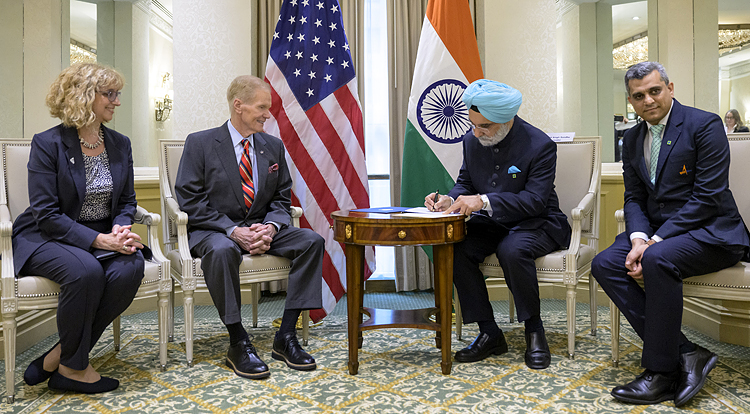
After Nelson met Union Minister Jitendra Singh, a joint working group (JWG) comprising representatives from ISRO and NASA is exploring collaboration on issues like radiation impact studies, micro-meteorite, orbital debris shield studies, space health and space medicine. According to the Department of Space (DoS), an implementation-cum-collaboration arrangement is undergoing inter-governmental approvals.
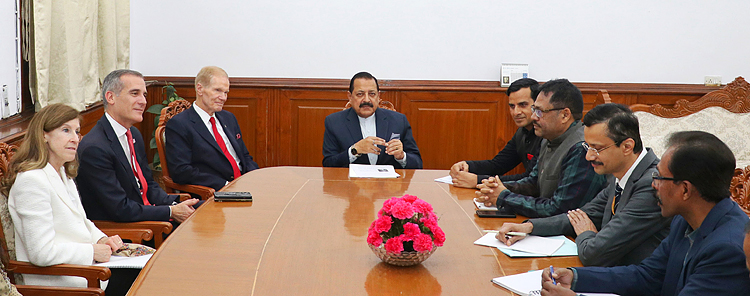
Concurrently, ISRO is exploring joint collaborations with Jeff Bezos’s Blue Origin LLC, Voyager Space Holdings Inc and Boeing Co. These potential partnerships could also involve Indian commercial entities. ISRO Chairman S. Somanath had told media in June 2023 that Blue Origin is very keen to consider using an Indian rocket as a crew capsule to service its proposed space station Orbital Reef in low-Earth orbit. Larsen & Toubro (L&T) is in early discussions with Blue Origin to supply orbital launch capabilities.
In February 2023, the US offered advanced training for Gaganyaan mission astronauts at NASA's Johnson Space Centre, and in June 2023, India signed the Artemis Accords for space exploration principles
In July 2023, Denver-based Voyager signed a memorandum of understanding (MoU) with ISRO and the Indian National Space Promotion and Authorisation Centre for using Gaganyaan to service its proposed space station -Starlab. Voyager also announced a preliminary agreement with NewSpace India Ltd., ISRO’s commercial arm, to explore using Indian rockets to launch and deploy small satellites. Boeing is considering designing and manufacturing a space capsule simulator for India’s human spaceflight project but hasn’t signed a contract yet.




The Aditya Solar wind Particle Experiment (ASPEX) payload onboard India's Aditya-L1 satellite is operating successfully. ASPEX comprises the Solar wind Ion Spectrometer (SWIS) and STEPS (Supra Thermal and Energetic Particle Spectrometer). The STEPS instrument became operational on September 10 and the SWIS instrument was activated on November 2. On December 8, ISRO announced that the Solar Ultraviolet Imaging Telescope (SUIT) installed in the Aditya-L1 spacecraft had captured the first-ever full-disk images of the Sun in near ultraviolet wavelengths. This achievement by Aditya-L1 marks a significant milestone in ISRO's solar observation and research program. As researchers analyse the collected data, the international scientific community awaits the knowledge that Aditya-L1's ASPEX is set to unveil about the solar wind and its implications for our planet.
ISRO is exploring collaborations with Blue Origin LLC, Voyager Space Holdings Inc, and Boeing Co., potentially involving Indian commercial entities
Following the successful soft-landing of the Chandrayaan-3 lander on the Moon, ISRO is working on two other lunar exploration missions. Addressing a gathering on the 62nd foundation day celebration of the Indian Institute of Tropical Meteorology in Pune on November 17, Nilesh Desai, Director, Space Applications Centre (SAC/ISRO), said the two ambitious lunar missions, LuPEx and Chandrayaan-4, aim at landing huge 350 kg landers on 90-degree (the darker side) of the moon with precise landing technology and sample return mission respectively. He further said that there are challenges with the new missions but hopefully ISRO will be able to undertake these in the next 5-10 years. ISRO Chief S. Somanath has said that the first unit of the Indian Space Station can be ready by 2028 and the Lunar Roadmap by 2047.
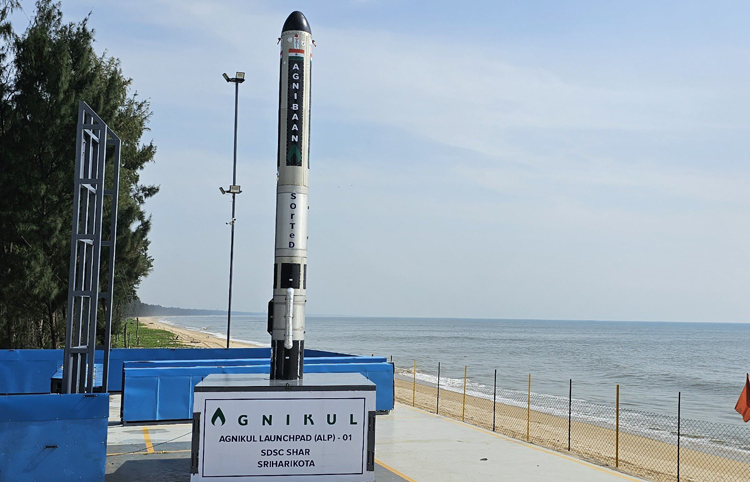
AgniKul, a Chennai-based startup, specialising in building satellite launch vehicles, plans to launch its first flight with the world’s first 3D printed engine before the end of 2023. The mission will be a technology demonstrator at a reduced scale from AgniKul’s first orbital launch planned in 2024. It may be recalled that the first startup successful in making a small satellite launch vehicle was Skyroot Aerospace that launched the Vikram S lander in November 2022.
Boeing is considering designing a space capsule simulator for India’s human spaceflight project
An interesting development in the international space arena is China-US space cooperation amid frosty relations between the two countries. NASA said on November 29 that it had “certified its intent to Congress” to allow NASA funded researchers to apply to the China National Space Administration (CNSA) access to the lunar samples, collected by China’s Chang’e 5 mission in 2020.





